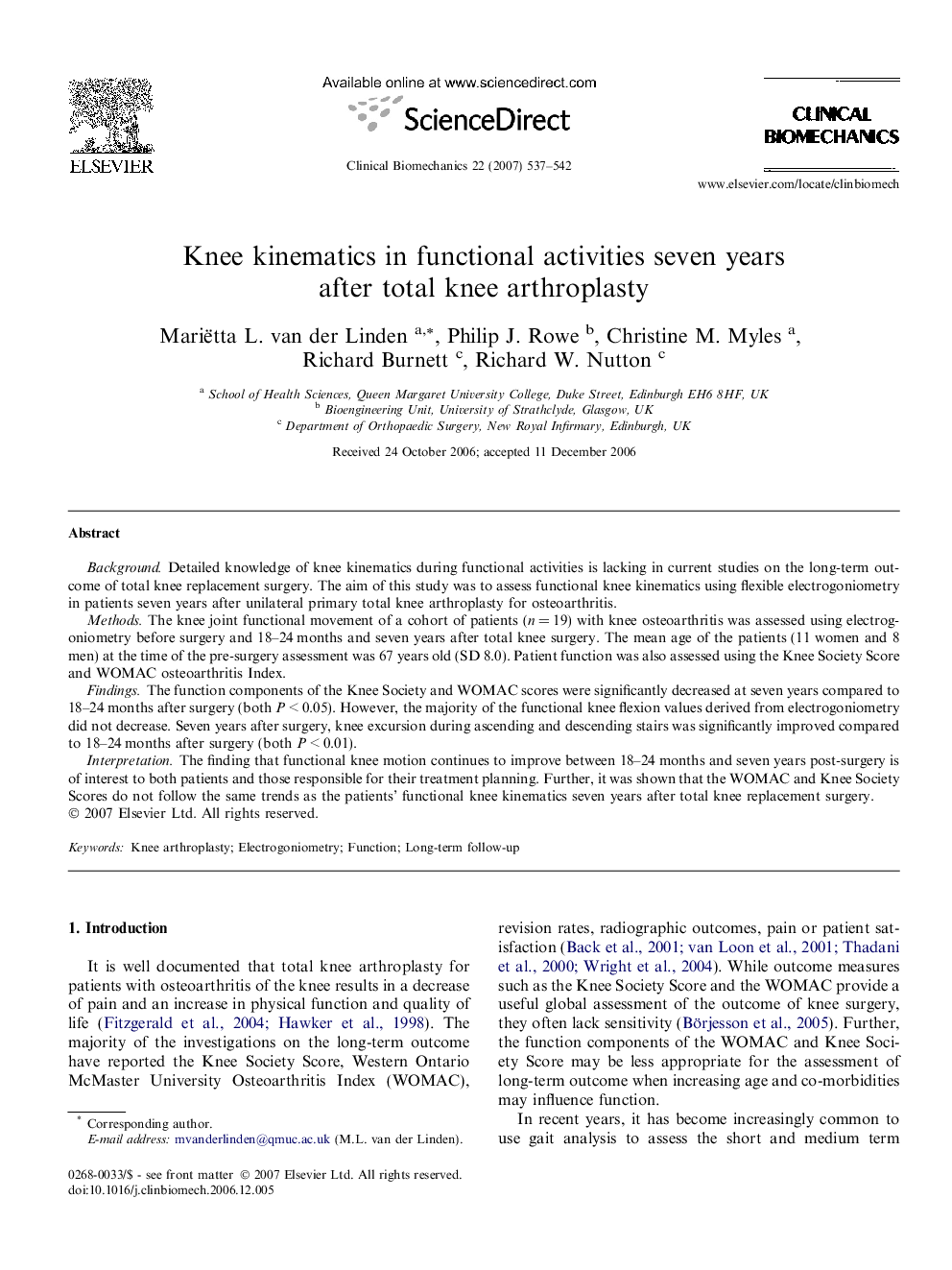| Article ID | Journal | Published Year | Pages | File Type |
|---|---|---|---|---|
| 4051366 | Clinical Biomechanics | 2007 | 6 Pages |
BackgroundDetailed knowledge of knee kinematics during functional activities is lacking in current studies on the long-term outcome of total knee replacement surgery. The aim of this study was to assess functional knee kinematics using flexible electrogoniometry in patients seven years after unilateral primary total knee arthroplasty for osteoarthritis.MethodsThe knee joint functional movement of a cohort of patients (n = 19) with knee osteoarthritis was assessed using electrogoniometry before surgery and 18–24 months and seven years after total knee surgery. The mean age of the patients (11 women and 8 men) at the time of the pre-surgery assessment was 67 years old (SD 8.0). Patient function was also assessed using the Knee Society Score and WOMAC osteoarthritis Index.FindingsThe function components of the Knee Society and WOMAC scores were significantly decreased at seven years compared to 18–24 months after surgery (both P < 0.05). However, the majority of the functional knee flexion values derived from electrogoniometry did not decrease. Seven years after surgery, knee excursion during ascending and descending stairs was significantly improved compared to 18–24 months after surgery (both P < 0.01).InterpretationThe finding that functional knee motion continues to improve between 18–24 months and seven years post-surgery is of interest to both patients and those responsible for their treatment planning. Further, it was shown that the WOMAC and Knee Society Scores do not follow the same trends as the patients’ functional knee kinematics seven years after total knee replacement surgery.
